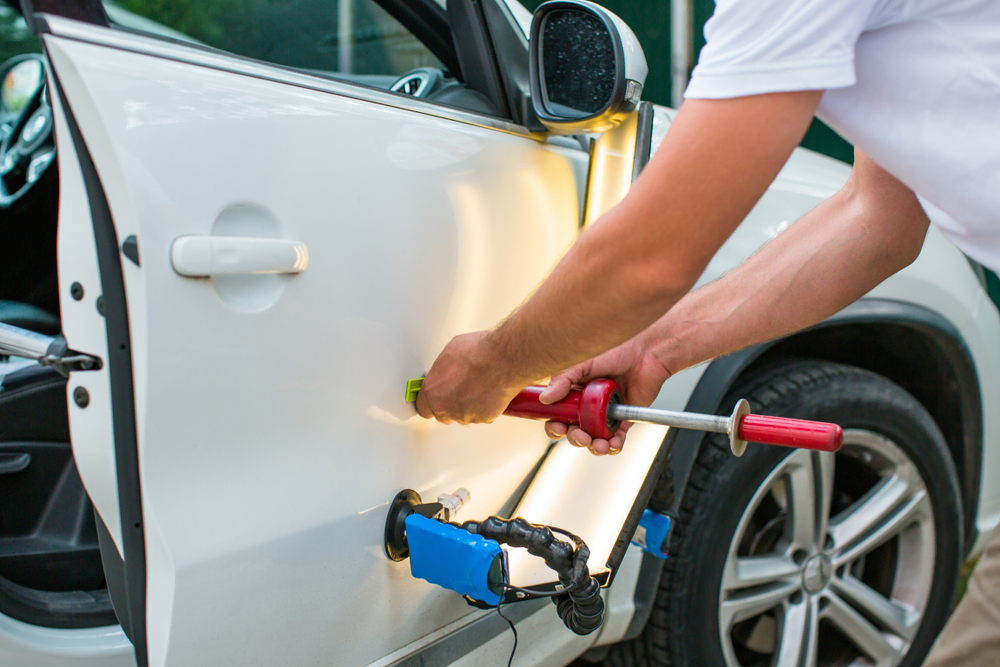
It’s no secret that cars take a beating during the winter months.
Between the snow, ice, salt and sliding vehicles, it’s no wonder that dents and dings are so common.
Fortunately, there is a way to protect your car from the elements and save money at the same time. Paintless dent repair (PDR) is an increasingly popular option for repairing minor dents and dings. PDR involves gently massaging the dent out from the inside of the panel without damaging the paint. This means that there is no need for expensive repainting costs. In addition, it can be done quickly and easily without removing the entire panel.
As a result, it’s the perfect solution for busy car owners who want to keep their car looking its best. So if you’re looking for a way to protect your car this winter, consider investing in a paintless dent repair plan. Here’s what you need to know.
What Is a Paintless Dent Repair Protection Plan?
It’s an addition to a car insurance policy that helps to pay for the cost of repairs to your car’s paint job. It can also cover the cost of repairs for minor dents and dings. These plans typically have a deductible, and their monthly premium is based on the make and model of your car. Most plans will cover up to $500 worth of damage, though some may have a higher or lower limit. There are a few things to keep in mind when considering a dent protection plan:
- It’s important to read the fine print to make sure you understand what is and is not covered.
- Be sure to compare rates from different companies before purchasing a plan.
- Remember that a dent protection plan is not a substitute for comprehensive or collision insurance; it’s simply an additional layer of protection.
Why Is Winter the Right Time to Get a Paintless Dent Repair Plan?
Winter is coming!
And that means your car will spend more time in the garage. But it doesn’t mean you have to put off those essential repairs. In fact, winter is the perfect time to get a plan. Here’s why:
- The weather is cooler, so your car won’t be subjected to extreme temperatures that can cause paint to blister and peel.
- Most people drive less during the winter months, so you’ll have an easier time finding an open slot at your local repair shop.
- You’ll have all winter to take advantage of your plan, so you can get those dents and dings fixed before they start to affect the resale value of your car.
So don’t wait until spring to get your car back in shape. Take advantage of the cooler weather and fewer crowds by getting a paintless dent repair plan this winter.

What Are Some More Benefits of Paintless Dent Repair?
There are many benefits over traditional methods of repair. Let’s review some of the most common ones:
- It’s Much Less Expensive
A dent in your car is more than just an eyesore. It can also be a significant expense. Traditional repair jobs can cost hundreds of dollars and often require the use of expensive tools and materials. PDR, on the other hand, is a much less expensive option. The process doesn’t require any specialized equipment, and it can often be completed in a matter of minutes. As a result, it’s an increasingly popular choice for those looking to save money on car repairs.
- The Process Is Much Faster
The process is much faster than traditional repair jobs. Here’s why: PDR is a fairly new technology that allows technicians to remove minor dents and dings without damaging the paint job. The process is relatively easy and doesn’t require special skills or training. That’s why it can be completed so quickly.
- More Environmentally Friendly
It’s more environmentally friendly because it does not generate harmful fumes or waste. Not only is this technique less damaging to the environment, but it also preserves the original paint job, saving time and money in the long run.
What Isn’t Covered in a Typical PDR Plan?
As you can see, these plans are fantastic and offer a lot to those who have them. However, they’re not a catch-all. Here are some of the things that are outside the coverage of your typical plan:
- Pre-existing damage – if you have any dents or dings before you purchase the plan, they will not be eligible for repair.
- Environmental damage – hail damage, for example, is also typically not covered.
- Dents that are too deep or the metal is stretched too thin – PDR may not be able to fix these.
However, in most cases, PDR is an effective and affordable way to remove minor blemishes from your car’s finish.